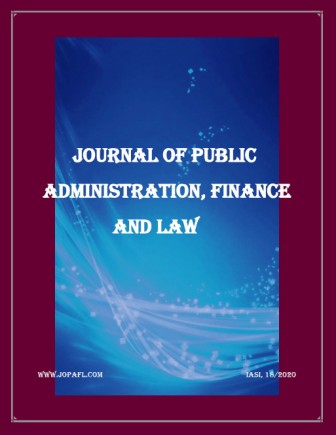UNDERSTANDING IMPLEMENTATION OF REGULATORY IMPACT ASSESSMENT IN POLICYMAKING IN ROMANIA AND NORTH MACEDONIA: A COMPARATIVE VIEW
UNDERSTANDING IMPLEMENTATION OF REGULATORY IMPACT ASSESSMENT IN POLICYMAKING IN ROMANIA AND NORTH MACEDONIA: A COMPARATIVE VIEW
Author(s): Tatiana-Camelia Dogaru (Cruceanu), Veli KreciSubject(s): Governance, Public Administration, Government/Political systems, EU-Accession / EU-DEvelopment, Comparative Law
Published by: Editura Tehnopress
Keywords: policy capacity; regulatory impact assessment; evidence-based policy;
Summary/Abstract: Addressing societal issues in a manner which is recognizing its complexities has been a great challenge for policy analysts and policy makers. Theories of recognizing the importance of better policies have very much focused on creating and transforming of policy relevant information into coordination and decision making processes. In the last decades, countries have been engaged into a process of reforming policymaking as to make more effective while including evidence-based instruments into the decision making process. This paper, sets to analyse the application of Regulatory Impact Assessment (RIA) into policymaking, taking into account that even before accession to the European Union, both countries of interest, Romania and North Macedonia has introduced the RIA as an evidence-based instruments, although the EU has no specific competences in the administrative sphere. However, an indirect impact of EU through the administrative standard set in the aquis, the transfer of the best practice and the promotion of its own management practices can be noticed on the administrative practice of Member States. The aim is to present several factors that emerged from the transfer process of policymaking into practice at a national level. Presenting and analysing these factors is seen as a way of understanding why the culture of using RIA in Romania is a path still under construction; and the fact that in North Macedonia has not produced the expected quality of legislation process. The methodological part takes the form of a qualitative analysis, consisting in the presentation of the steps made for understanding why the use and the quality of RIA is highly uneven, and many RIAs are superficial.
Journal: Journal of Public Administration, Finance and Law
- Issue Year: 2020
- Issue No: 18
- Page Range: 312-327
- Page Count: 16
- Language: English

